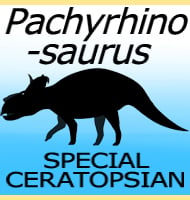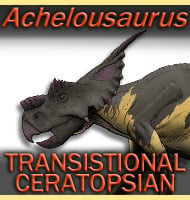Prenoceratops
In Depth A close relative of the better known ceratopsian dinosaur Leptoceratops, Prenoceratops can be told apart by the skull which has a greater slope to the skull than that seen in Leptoceratops. Further Reading - Description of Prenoceratops pieganensis gen et sp. nov. (Dinosauria: Neoceratopsia) from the Two Medicine Formation of Montana. - Journal … Read more

